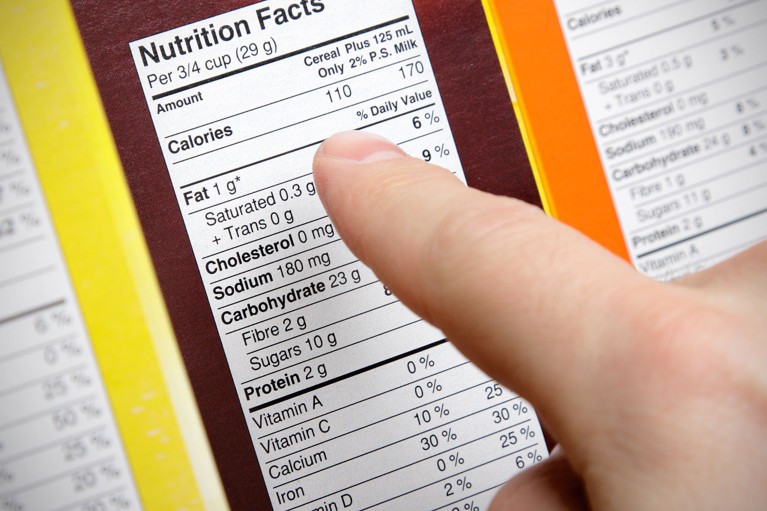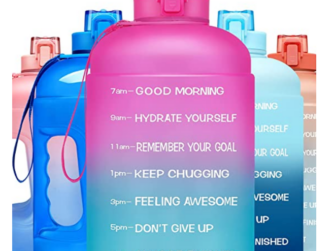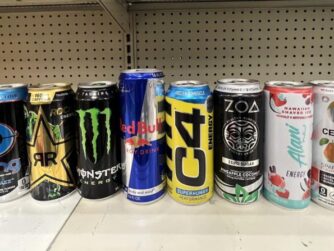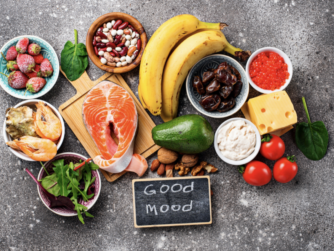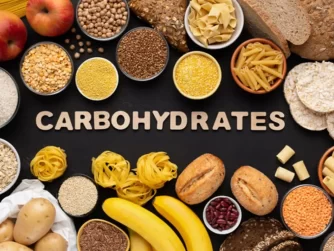Decoding the fine print so you can make healthier, more confident choices
Let’s be real: standing in a grocery aisle trying to figure out what’s actually healthy can feel like decoding ancient hieroglyphics. The bold claims on the front scream things like “low-fat,” “all-natural,” or “heart healthy,” but when you flip that package over? Boom—confusing charts, percentages, and a long list of ingredients you can’t even pronounce.
If you’ve ever thought, “Why is this so complicated?”—you’re not alone. But here’s the good news: once you know what to look for, nutrition labels go from overwhelming to empowering. You don’t need a degree in biochemistry—just a few practical tips and a little label-reading confidence.
Let’s break it down.
Start With the Serving Size (It’s the Sneakiest Part)
Before you dive into calories, fat, sugar, or anything else—look at the serving size. This is the key to everything on the label. If the serving size is “2 cookies,” but you normally eat 4, you’ll need to double every number you see.
Real-World Example:
Let’s say a bag of chips says it has 150 calories per serving—but the serving is just 11 chips. Who eats 11 chips? That’s a sad snack. If you eat 33 chips, you’re consuming 450 calories, not 150.
👉 Pro Tip: Always ask, “How much of this would I actually eat in one sitting?” Then adjust the math accordingly.
Calories Matter—but Context Matters More
Calories give you an idea of how much energy you’re getting from that food. But don’t just focus on the number—look at where those calories are coming from.
A 200-calorie snack made up of whole foods like almonds or Greek yogurt is going to fuel your body a lot differently than 200 calories of processed crackers or sugar-loaded granola bars.
Calories aren’t the enemy—they’re just information.
Spotting Hidden Sugars (They’re Sneaky!)
Sugar is where most labels try to pull a fast one on you. Food companies love to hide sugar under different names to make the product seem healthier than it is.
Here are just a few common aliases for sugar:
- High-fructose corn syrup
- Cane juice
- Dextrose
- Maltose
- Syrup (of almost any kind)
- Agave nectar
- Evaporated cane juice
Real-World Example:
A yogurt might say “Only 100 calories!” and “Low fat,” but when you look closer, it has 18 grams of sugar—that’s over 4 teaspoons of sugar in one small cup.
👉 Pro Tip: Try to keep added sugars to under 24g per day for women and 36g for men, as recommended by the American Heart Association.
Unhealthy Fats: The Good, the Bad, and the Ugly
Fat isn’t the villain it was made out to be in the ’90s. Your body needs fat for hormone production, energy, and even brain health. But not all fats are created equal.
Look for these healthy fats:
- Monounsaturated fats (avocados, olive oil, nuts)
- Polyunsaturated fats (fatty fish, flax seeds, walnuts)
Avoid or limit these:
- Trans fats – Even if the label says “0g trans fat,” check the ingredients. If you see “partially hydrogenated oils,” that means trans fats are still lurking. They’re known to raise bad cholesterol and lower good cholesterol.
- Saturated fats – These aren’t inherently evil, but try to keep them in moderation (less than 10% of your daily calories).
👉 Pro Tip: If the ingredient list looks like a chemistry experiment, the fats probably aren’t the good kind.
Check the Carbs—but Prioritize Fiber
Carbohydrates include sugars, starches, and fiber. They aren’t bad—in fact, carbs are your body’s preferred energy source. But the type of carb matters.
Focus on:
- Whole carbs – Found in vegetables, fruits, beans, and whole grains
- Fiber – Aim for at least 25–30 grams per day
Real-World Example:
Two slices of bread might both have 15g of carbs, but one has 1g of fiber and the other has 5g. Go with the one with more fiber—it’ll keep you full longer and support digestion.
Protein = Power
Protein helps build muscle, keeps you full, and supports recovery—especially if you’re active. Look for protein-rich options, especially in snacks and meals.
Good sources of protein on a label:
- Chicken, turkey, lean beef
- Eggs or egg whites
- Greek yogurt
- Beans, lentils
- Protein powders (check the ingredient list to avoid junk fillers)
👉 Pro Tip: Aim for 15–30g of protein per meal, depending on your goals.
The Ingredient List: Where the Truth Lives
The nutrition facts panel gives you the numbers, but the ingredient list tells the real story. It’s listed in order of quantity—meaning the first ingredient is what the product contains most of.
Watch out for:
- Long, unpronounceable ingredient lists
- Multiple forms of sugar
- Artificial colors and flavors
- “Enriched” flours (often a sign it’s highly processed)
Look for:
- Short lists you can understand
- Whole food ingredients like oats, nuts, fruits, brown rice, or lean meats
👉 If sugar is one of the first three ingredients—it’s basically a dessert. Even if it’s labeled as “healthy.”
Don’t Fall for Front-of-Package Hype
This might be the most important part of the whole label-reading process: Ignore the front.
Seriously.
Claims like “low fat,” “gluten-free,” “keto-friendly,” or “natural” are marketing tactics—not indicators of actual health. Always flip it over and check the nutrition facts and ingredients before making a decision.
Real-World Example:
Some cereals claim to be “whole grain” but still contain more sugar than a donut. Others say “high in fiber” but use synthetic fiber additives with little benefit.
Quick Label-Reading Checklist (Print or Save This!):
- ✅ Start with the serving size – Know how much you’re actually eating.
- ✅ Check the calories – But more importantly, where they come from.
- ✅ Scan the sugar – Look for hidden names and total grams of added sugars.
- ✅ Review the fat – Go for good fats, ditch trans fats.
- ✅ Look at the carbs – High fiber = better choice.
- ✅ Prioritize protein – Especially if you’re active.
- ✅ Read the ingredients – Fewer and real is better.
- ✅ Ignore the front of the package – Always flip it over!
Final Thoughts: Confidence Over Perfection
Reading nutrition labels doesn’t have to be overwhelming. Think of it like learning a new language—you don’t need to be fluent overnight. The more you practice, the easier it becomes.
Start with the basics. Check your go-to snacks and meals. Compare a few labels. See what surprises you. Knowledge gives you the power to make better choices—not just for your goals, but for your overall health.
And remember: You don’t need to eat “perfectly” to eat well. Just aim to make informed choices most of the time.
